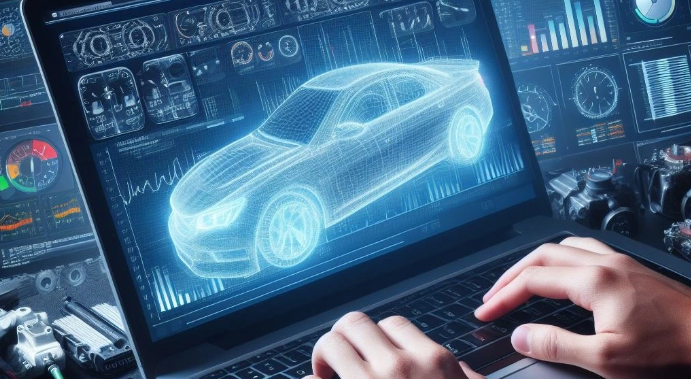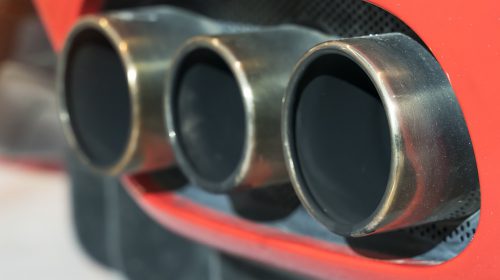
Table of Contents
Electric vehicles (EVs) are revolutionizing the automotive landscape with their quiet operation, instant torque, and zero emissions. As electric car ownership grows, so does interest in performance optimization, including a popular modification known as “remapping.” But can you remap an electric car in the same way you would a traditional internal combustion engine (ICE) vehicle? This article explores the technical foundations, potential benefits, challenges, and considerations involved in electric car remapping to provide an authoritative guide for tech-savvy enthusiasts.
Understanding Electric Car Remapping: The Basics
Remapping traditionally refers to modifying a vehicle’s engine control unit (ECU) software to optimize performance parameters such as fuel injection, ignition timing, and boost pressure. In an ICE vehicle, remapping can unlock additional horsepower or improve fuel efficiency by recalibrating how the engine operates.
With electric cars, the concept is more nuanced. Electric vehicles do not have a conventional ECU controlling combustion processes but instead rely on an electric control system managing battery output, motor performance, and energy recovery. The equivalent of remapping in an EV involves modifying the vehicle’s powertrain control software—sometimes called the motor controller or battery management system (BMS).
The process involves adjusting parameters such as torque delivery curves, power limits, regenerative braking settings, and throttle response. These software adjustments are usually accessed through the vehicle’s controller area network (CAN bus) or proprietary diagnostic tools.
How Electric Car Remapping Differs from Traditional Vehicle Tuning
Unlike tuning a petrol or diesel engine, electric car remapping faces unique technical challenges. Firstly, the electric motor’s torque is instantaneous and managed electronically, so modifications must carefully balance power delivery without compromising battery health or safety.
Secondly, the software interfaces are often tightly integrated with battery management, thermal management, and safety protocols. Improper remapping can inadvertently stress the battery cells or cause thermal runaway risks. This makes remapping an electric car far more complex than simply tweaking ECU maps on traditional vehicles.
Furthermore, electric vehicles often come with sophisticated over-the-air update mechanisms controlled by manufacturers, limiting access to low-level software controls by third-party tuners. These factors make electric car remapping a specialized field requiring deep expertise.
Can You Remap an Electric Car Safely? Technical Considerations
The question “can you remap an electric car safely?” hinges on understanding the technical limitations and risks involved. While remapping can yield performance improvements, it is critical to evaluate potential impacts on the battery, powertrain components, and overall vehicle reliability.
Battery and Powertrain Implications
The lithium-ion battery is the heart of an EV, and its longevity depends on managing charge and discharge rates, temperature, and state of health. Remapping that increases peak power output or alters torque delivery can accelerate battery degradation if not carefully controlled.
Moreover, increasing motor output beyond factory specifications can strain the inverter and cooling systems, risking premature component failure. Many EVs use software limits to protect these parts, so bypassing them via remapping could void warranties or cause safety hazards.
Thermal management is another crucial consideration. Higher performance settings can generate excessive heat, which the vehicle’s cooling system might not be designed to handle continuously. This can lead to overheating and reduced battery life or powertrain damage.
Performance Gains and Potential Drawbacks
When done correctly, remapping an electric car can improve acceleration, throttle responsiveness, and overall driving dynamics. For example, some EV owners seek to unlock higher torque outputs or quicker torque ramp-up for sportier performance.
However, such gains often come with trade-offs. Increased power can reduce driving range due to higher energy consumption, and aggressive torque delivery may lead to traction control intervention or instability on slippery surfaces.
Another potential drawback is increased wear on drivetrain components like the electric motor, gearbox (if present), and suspension due to harsher driving dynamics. Owners should weigh the performance benefits against long-term reliability and maintenance costs.
The Technical Process of Electric Vehicle Remapping
Remapping an electric vehicle involves a highly technical procedure that requires specialized tools and software access. The process typically includes the following steps:
- Diagnostic Access: Connecting to the EV’s electronic control systems through the CAN bus or manufacturer-specific diagnostic interfaces.
- Software Extraction: Downloading the current control software or firmware from the motor controller and battery management system.
- Parameter Modification: Adjusting software maps related to torque limits, power output, regenerative braking behavior, and throttle mapping.
- Testing and Calibration: Verifying the changes under various driving conditions to ensure performance improvements do not compromise safety or battery health.
- Re-uploading: Installing the modified software back into the vehicle’s control units.
This process requires advanced knowledge of EV architecture, software programming, and diagnostic protocols. Unlike traditional ECU remapping, which often uses commercial off-the-shelf tools, EV remapping can demand custom-developed software solutions due to proprietary control systems.
Professional vs. DIY Remapping: What You Need to Know
Attempting to remap an electric car without professional expertise is highly risky. Amateur modifications may introduce software bugs, disrupt safety systems, or cause irreversible damage to expensive components.
Professional tuners specializing in EVs have access to validated remapping tools, manufacturer data, and expertise to calibrate software safely while optimizing performance. They also ensure compliance with vehicle safety and regulatory standards.
DIY remapping attempts can void warranties, breach regulatory compliance, and endanger vehicle safety. Therefore, owners interested in electric car remapping should seek professional services to mitigate these risks.
Legal and Warranty Implications of Electric Car Remapping
Remapping electric cars involves significant legal and warranty considerations. Most manufacturers explicitly prohibit unauthorized software modifications in their warranty agreements. Modifying the powertrain control software could void coverage for battery and drivetrain repairs, potentially leading to costly out-of-pocket expenses.
Additionally, regulatory bodies in many regions have stringent laws governing vehicle emissions, safety, and software integrity. Unauthorized remapping may violate these regulations, leading to fines or vehicle registration issues.
EV owners should thoroughly review warranty terms and local laws before proceeding with remapping. In some cases, manufacturers offer official performance upgrades through software updates that maintain warranty and regulatory compliance, presenting a safer alternative.
Conclusion
So, can you remap an electric car? Technically, yes—it is possible to modify the control software of an electric vehicle to optimize performance parameters such as torque delivery, throttle response, and regenerative braking. However, electric car remapping differs fundamentally from traditional engine tuning due to the complex integration of battery management, powertrain control, and safety systems.
Remapping an EV requires specialized knowledge, advanced tools, and a careful balance between performance gains and risks to battery health and vehicle reliability. While professional remapping services exist, DIY attempts pose significant dangers and can void warranties or break regulatory rules.
As electric vehicle technology evolves, we can expect remapping options to become more accessible and sophisticated, potentially through manufacturer-supported updates that optimize performance without compromising safety. For now, EV owners interested in remapping should proceed cautiously, prioritizing expert guidance and thorough technical understanding.




